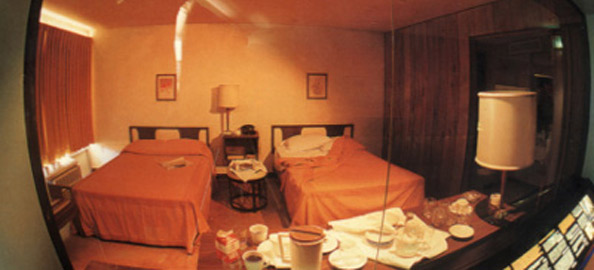 |
 |
 |
|
Important
People | 
The aftershock of the assassination of Dr. Martin Luther King, Jr. on April 4, 1968 would plunge the Lorraine Motel, a small minority-owned business in the south-end of downtown Memphis, into a long and steep decline. The motel´s owner, Walter Lane Bailey kept a couple of rooms as a shrine to Dr. King and to Bailey´s wife, Lorraine, who died of a brain hemorrhage several hours after King was shot. By 1982, the Lorraine Motel was a foreclosed property. A group of prominent Memphians, concerned that this historic site would be destroyed through continued neglect and indifference, formed the Martin Luther King Memorial Foundation to save the Lorraine. Using a design report by a former Smithsonian Institution, Benjamin Lawless, the Foundation started seeking funding for the nations´s first comprehensive exhibit chronicling America´s civil rights movement. The Foundation raised $10,000, which brought a short option to buy the
Lorraine; however, members of the Foundation were unable to raise the
full contract price of $250,000. Fortunately, in December 1982, the Foundation
was able to purchase the Lorraine at auction for $144,000. Of that amount,
$69,000 came from the fundraising efforts of Foundation members. In addition,
$25,000 was donated by the American Federation of State, County and Municipal
Employees (AFSCME) and $10,000 was donated by Lucky Hearts Cosmetics,
a business located across the street from the Lorraine. The remaining
$50,000 was loaned by Tri-State Bank and secured jointly by AFSCME and
Lucky Hearts. 
The Lorraine Civil Rights Foundation held an official groundbreaking in 1987 and on September 28, 1991, the National Civil Rights Museum opened its doors to visitors. In February 2001, the Museum broke ground for an $11 million expansion project entitled, Exploring the Legacy . Exploring the Legacy adds 12,800 square feet of exhibition space and connects the main campus of the Museum to the Young and Morrow building and the Main Street Rooming House where James Earl Ray allegedly fired the fatal shot resulting in the death of Dr. Martin Luther King, Jr. Both buildings were donated to the Museum by the Hyde Family Foundation. Exploring the Legacy answers three critical questions: What happened after Dr. King´s death? Did the Movement die in Memphis? What is the legacy of the Movement nationally and internationally? The expansion also includes an overview of some of the world´s most crucial human rights movements and the achievements gained through the efforts and sacrifices of courageous individuals who stood by their convictions. In celebration of the Museum´s 11th anniversary, Exploring the Legacy opened to the public on September 28, 2002. |